EAST (Day 6)
Our original plan for the day was to swim with the turtles at Sheraton caverns, but the tour was cancelled. So we found other interesting things to do instead.

Breakfast on the lanai... longan berries, mango, papaya and some apple bananas
Our first stop was Lydgate Beach Park, not too far from where we were yesterday. It was named after Reverend John Mortimer Lydgate (1854 - 1922), a local pastor and land surveyor. In order to preserve some ancient Hawaiian ruins he had discovered here, he petitioned the territorial governor to set aside this area as a public park.... which was done.
The Lydgate Pools are thanks to Albert Smith Morgan Sr. (1908 - 2001). In 1964, he organized the construction of two rock-enclosed pools to create a protected swimming area for children.

A map of the protected pools and the nearby ruins


Lydgate Pools
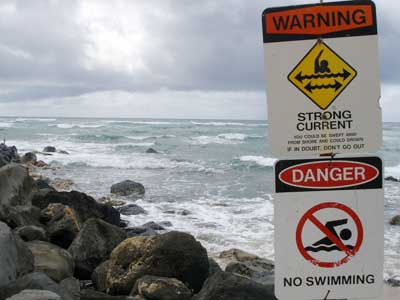
Outside the pools, the ocean waves can get quite dangerous.

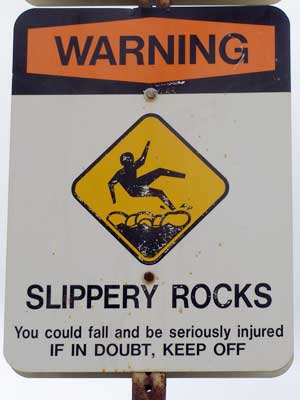
Ouch!
Just north of the pools were the ruins. Along the Wailua River were many temples as well as the Holoholoku, the royal birthing place (including of Chief Wailuanuiho'ano in the 14th century). This section by the mouth of the river was the location of Hikinaakala Heiau (a temple dating back as far as the 1300's) and Hauola, the City of Refuge (a sanctuary or pu'uhonua), where those who broken a law could escape punishment. For example, it was punishable by death to walk in the shadow of a royal person. But if a person could make it here in time, eventually they'd be able to resume their normal life. It also served as a place of safety during war.

The mouth of the Wailua River, with taro fields, fishing ponds, a sailing port and temples (Hikinaakala is the far lower right)


Hikinaakala means the "rising of the sun" since it faced east to greet the morning rays. Its large size implies it was important but its true function isn't known. Its walls were possibly 6 feet high and up to 11 feet wide.

In 1819, the traditional Hawaiian religion called aikapu was abolished by King Kamehameha II and many of the rocks were used to build roads. Today, only the foundation stones remain.
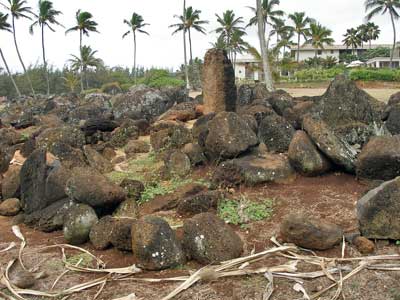

Hauola, the City of Refuge ... and native Hala (or screwpines)
I walked down to the river's edge. They were a bit hard to make out, but petroglyphs (ki'i pohaku) marked some rocks with images of people, fish and geometric shapes.




The carved rocks emerge during low tide.
We followed Kuamo'o Road (580) inland along the river. It offered some nice overlooks and eventually led us to Kamokila Hawaiian Village.
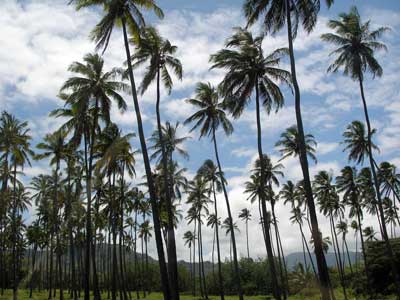
There's a reason this area is nicknamed the Coconut Coast!


The 151–foot 'Opaeka'a Falls ... and the Wailua River valley

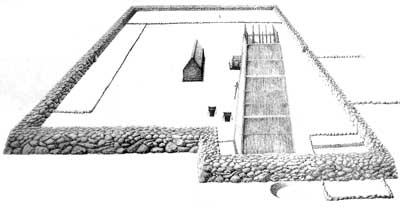
Remains of Poli'ahu Heiau, another of the Wailua River temples ... This is what it may have looked like in the 1700's. Every stone was hand-carried up from the river below.
Kamokila Hawaiian Village is a 4-acre park where a traditional Hawaiian village has been recreated from centuries ago. It includes 14 thatched-roof huts, a canoe house, a birthing house, a hula house, the chief’s assembly house and a doctor’s house. It was also the location for the 1995 movie “Outbreak.”




A thatched roof hut ... and a tiki
Tikis represented the gods and spirit powers. They were brought to the Hawaiian islands from Polynesia about 1,000 years ago as a means of communication or connection with these deities. The primary gods here were: Ku (god of war), Lono (god of agriculture and peace), Kane (god of creation and sunlight) and Kanaloa (god of the sea)


The doctor's house (Hale La'au Lapa'au) ... and inside the men's dining hut (Hale Mua)
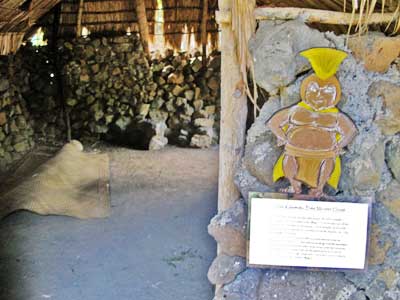

The Prime Minister’s House (Hale Kalaimoku) ... and petroglyphs (ki'i pohaku)
We returned back down the road and went to the nearby Smith's Tropical Paradise, where we attended an evening luau.


A tram tour brought us in. The Ki Ti plant to the right is used to make hula skirts.
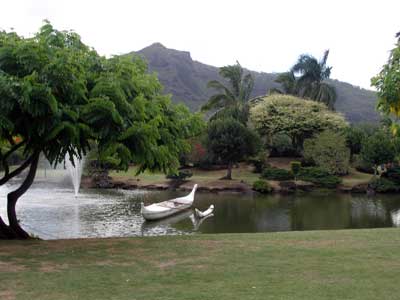

A glimpse of the beautiful 30-acre gardens


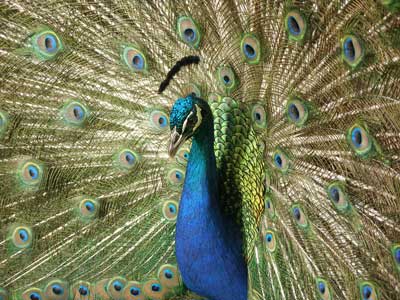

An dazzling show of splendor from one of the numerous peacocks .... but she isn't impressed.


Not so impressive from the backside! ... Taking a rest
A luau is a traditional Hawaiian feast that involves food, music and hula. It can be used to celebrate anything... a graduation, birthday etc. Traditionally, men and women used to eat their meals separately. Once the old religion was abolished in 1819, women were allowed to join the men and eat the special foods. The name comes from the food that was often served, a cooked dish of taro (lu'au) leaves, coconut milk and squid or chicken. Today's main dish was kalua pig, but fortunately there were many other yummy dishes for vegetarians such as myself.


Our dining hall ... The blowing of the conch begins the ceremony.


The roasted pig is dug up from the imu (or underground oven).


Traditional dancing

